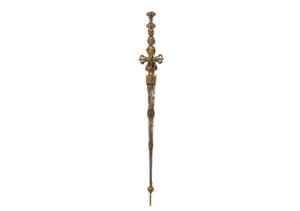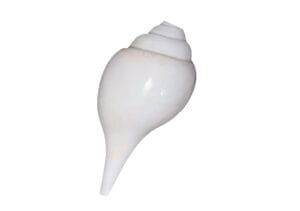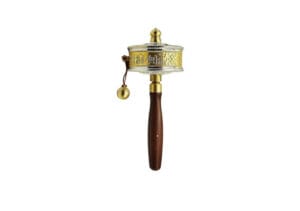
Khatvanga
Sometimes called a tantric staff, it is usually made of wood, metal or bone and has three skulls on top, representing the elimination of the three root poisons, desire, aversion and ignorance. In Vajrayana Buddhism, it symbolizes the ultimate bodhicitta, the union of great blessings and emptiness. Externally, it also represents the material world of Mount Sumeru.




